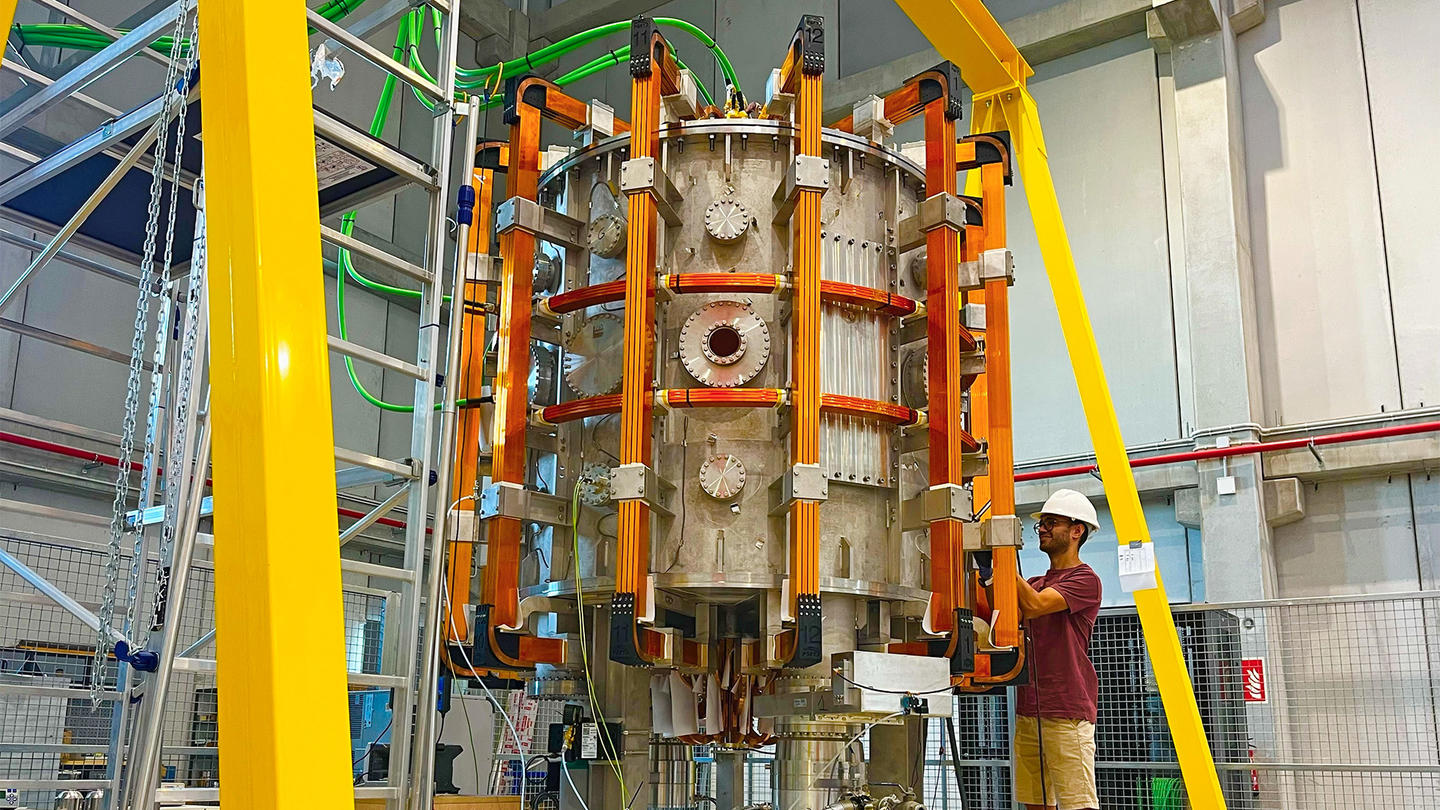Infinite Energy with Nuclear Fusion: A Game-Changing Discovery
Nuclear fusion has long been hailed as the ultimate solution to the world’s energy crisis. The recent success of the Small Aspect Ratio Tokamak (SMART) in achieving its first plasma marks a major step forward. Unlike conventional fusion devices, SMART explores a novel negative triangularity plasma shape that could stabilize fusion reactions and pave the way for commercial fusion power. Scientists believe that if this technique proves viable, it could lead to smaller, more efficient, and cost-effective fusion reactors—bringing us closer to the dream of limitless, clean energy.
𝐒𝐮𝐦𝐦𝐚𝐫𝐲
- Nuclear fusion is the ultimate goal for clean, sustainable energy.
- The University of Seville has developed SMART, a unique fusion reactor.
- SMART recently achieved first plasma, marking a major milestone.
- Unlike traditional tokamaks, SMART uses negative triangularity.
- Negative triangularity improves plasma confinement and stability.
- Traditional tokamaks struggle with Edge Localized Modes (ELMs), damaging reactor walls.
- SMART’s design may eliminate these instabilities, making fusion energy more viable.
- Fusion energy mimics the Sun’s power, using hydrogen isotopes.
- It produces vast energy without carbon emissions or long-lived radioactive waste.
- Current fusion reactors require extreme conditions: 100 million degrees Celsius or higher.
- Scientists worldwide are collaborating on fusion research, sharing insights.
- Projects like ITER in France and SPARC in the U.S. also aim for fusion breakthroughs.
- If successful, SMART could lead to smaller, more efficient fusion power plants.
- A stable fusion power plant could revolutionize global energy and replace fossil fuels.
- The future of fusion energy depends on continued innovation and international cooperation.

𝑺𝒎𝒂𝒓𝒕 𝑭𝒖𝒔𝒊𝒐𝒏 𝒂𝒏𝒅 𝒕𝒉𝒆 𝑷𝒓𝒐𝒎𝒊𝒔𝒆 𝒐𝒇 𝑰𝒏𝒇𝒊𝒏𝒊𝒕𝒆 𝑷𝒐𝒘𝒆𝒓
Fusion energy has remained an elusive goal for decades. While nuclear fission is widely used in power plants, fusion—the process that powers the Sun—has proven far more difficult to harness. However, a new breakthrough involving the Small Aspect Ratio Tokamak (SMART) could bring us significantly closer to achieving practical nuclear fusion.
Developed by the University of Seville’s Plasma Science and Fusion Technology Laboratory, SMART recently achieved its first plasma, marking an important milestone in fusion research. Unlike conventional tokamaks, SMART explores the concept of negative triangularity, a unique plasma configuration that could solve one of the biggest hurdles in fusion energy: plasma stability.
𝑻𝒐𝒌𝒂𝒎𝒂𝒌𝒔: 𝑨 𝑪𝒓𝒖𝒄𝒊𝒂𝒍 𝑺𝒕𝒆𝒑 𝑻𝒐𝒘𝒂𝒓𝒅𝒔 𝑬𝒏𝒆𝒓𝒈𝒚 𝑰𝒏𝒅𝒆𝒑𝒆𝒏𝒅𝒆𝒏𝒄𝒆
Tokamaks are donut-shaped reactors designed to contain and stabilize super-heated plasma using powerful magnetic fields. The challenge with these devices has always been controlling instabilities that can disrupt fusion reactions.
Traditionally, plasma in tokamaks has a positive triangularity—meaning the “D”-shaped plasma has its curved edge facing outward. However, scientists have discovered that flipping this configuration to negative triangularity can suppress dangerous instabilities such as Edge Localized Modes (ELMs). These instabilities can damage reactor walls and make sustained fusion reactions difficult.
SMART is the first compact tokamak specifically designed to test negative triangularity on a practical level. If successful, this approach could significantly improve plasma confinement and make fusion energy more viable and cost-effective.
SMART is more than just a scientific experiment; it is a core component of the Fusion2Grid strategy at the University of Seville. This initiative aims to develop grid-based fusion energy as a practical alternative to fossil fuels.
The success of SMART could help design compact, high-performance fusion reactors that are both affordable and scalable. Unlike massive fusion projects such as ITER, SMART’s compact nature allows for faster development cycles and lower costs.
𝑻𝒉𝒆 𝑩𝒆𝒏𝒆𝒇𝒊𝒕𝒔 𝒐𝒇 𝑵𝒆𝒈𝒂𝒕𝒊𝒗𝒆 𝑻𝒓𝒊𝒂𝒏𝒈𝒖𝒍𝒂𝒓𝒊𝒕𝒚
| Feature | Positive Triangularity | Negative Triangularity |
|---|---|---|
| Plasma Shape Stability | Less stable | More stable |
| Edge Localized Modes (ELMs) | More common | Greatly suppressed |
| Plasma Confinement | Moderate | Stronger confinement |
| Energy Efficiency | Lower | Higher |
𝑾𝒉𝒂𝒕 𝑫𝒐𝒆𝒔 𝑻𝒉𝒊𝒔 𝑴𝒆𝒂𝒏 𝒇𝒐𝒓 𝑪𝒐𝒎𝒎𝒆𝒓𝒄𝒊𝒂𝒍 𝑭𝒖𝒔𝒊𝒐𝒏?
If SMART can successfully prove the effectiveness of negative triangularity, it could shape the design of future commercial fusion reactors. This would lead to:
- Smaller, more efficient reactors
- Lower energy costs
- A faster transition from experimental to commercial fusion power
𝑪𝒖𝒓𝒓𝒆𝒏𝒕 𝑺𝒕𝒂𝒕𝒆 𝒐𝒇 𝑭𝒖𝒔𝒊𝒐𝒏 𝑬𝒏𝒆𝒓𝒈𝒚
| Project | Location | Main Focus | Status |
|---|---|---|---|
| SMART | Spain | Negative triangularity | First plasma achieved |
| ITER | France | Large-scale tokamak | Under construction |
| SPARC | USA | Compact high-field fusion | Development phase |
| JET | UK | Fusion experiments | Operational |
With global efforts like SMART, the dream of fusion power is closer than ever. If successful, this breakthrough could redefine how humanity generates energy, potentially providing infinite power with minimal environmental impact.
𝑭𝒂𝒄𝒕𝒔 𝑨𝒃𝒐𝒖𝒕 𝑭𝒖𝒔𝒊𝒐𝒏
- The Sun’s core fuses 620 million tons of hydrogen into helium every second.
- Fusion reactions release four times more energy than nuclear fission.
- A single glass of fusion fuel (deuterium & tritium) could power a city for a day.
- Unlike fission, fusion produces no long-lived nuclear waste.
𝑹𝒆𝒇𝒆𝒓𝒆𝒏𝒄𝒆𝒔
- University of Seville’s Fusion2Grid Strategy
- First plasma generated in SMART tokamak – World Nuclear News
- A new and unique fusion reactor comes together with PPPL’s contributions – Princeton Plasma Physics Laboratory
- SMART spherical tokamak produces its first plasma – Physics World
- SMART, one step closer to nuclear fusion with its first plasma – EurekAlert!
- SMART Tokamak Ignites Fusion Revolution With First Plasma – SciTechDaily
- ITER: The World’s Largest Fusion Projec